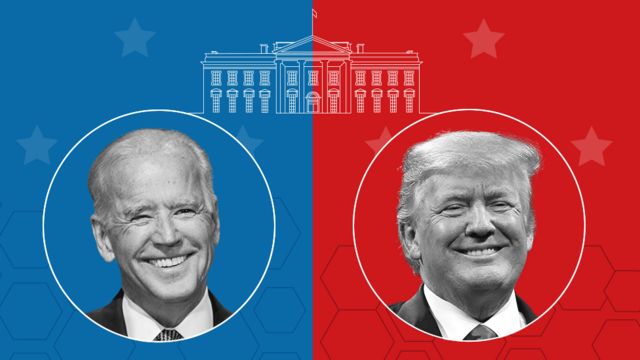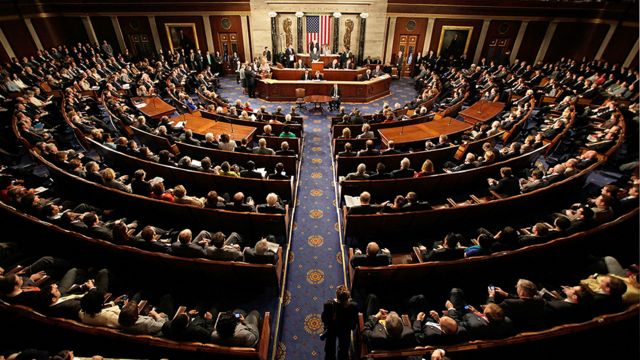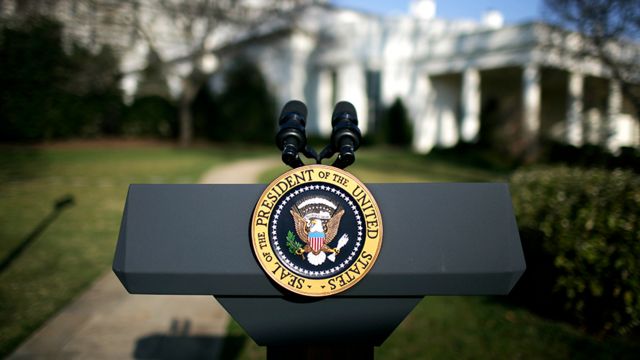
The President of the United States of America has a huge influence on how the world responds to international crises, such as wars, global pandemics and climate change.
When does the election take place and who are the candidates?
The presidential election always takes place on the first Tuesday in November, this time on November 3.
Republicans are the conservative political party of the United States and their candidate for this year’s election is President Donald Trump, who hopes to secure another four-year term.
The Republican Party is also known as the GOP, or Grand Old Party. In recent years, he has spoken out in favor of lowering taxes, the right to bear arms and tightening restrictions on immigration. This party tends to garner more support in rural America. Former Republican Presidents include George W Bush, Ronald Reagan, and Richard Nixon.
The Democrats are the liberal political party of the United States and their candidate is Joe Biden, a senior politician known to have served as Barack Obama’s vice president for eight years.
The Democratic Party is best defined by its liberal positions on issues such as civil rights, immigration and climate change.
He believes that the government should play a bigger role in people’s lives, for example by providing them with health insurance. Support for the party tends to be strongest in urban areas of the United States. Former Democratic presidents include John F. Kennedy and Barack Obama.
Both men are in their seventies: Mr. Trump would be 74 at the start of his second term, while at 78, Mr. Biden would be the oldest of all presidents in history to serve a first term.
How is the winner of the election chosen?
The winner is not always the candidate with the most votes from voters nationally – as defeated Hillary Clinton found out in 2016.
Hillary Clinton was Donald Trump’s opponent in 2016. She won nearly three million more votes than Mr. Trump, mainly because she garnered a high number of votes in densely populated Democratic stronghold states like New York. and California. However, her rival largely beat her in the Electoral College race with 304 voters to 227 because he won several close elections in key states.
Instead, candidates compete for the votes of the electoral college. Each state has a certain number of votes in the electoral college according to its population. There are a total of 538 electors. The winner is therefore the candidate who wins 270 or more votes from the electorate.
Like most electoral systems, the Electoral College has its supporters and opponents, but it is widely respected because of its historical roots dating back to the founding of the United States. It usually reflects the vote of the voters, but sometimes that is not the case as in two of the last five elections, notably when Donald Trump won in 2016.
This means that when a person votes for their preferred candidate, they do so at the state level rather than in a national ballot.
All but two states have a “winner-takes-all” rule, that is, the candidate who wins the most votes from the electorate receives all the votes in the electoral college. State.
Most states lean heavily towards one or the other party, which means that candidates are concentrating their efforts on a dozen states where voter positions are most uncertain and vary from election to election depending on the election. favor of the Republican Party or the Democratic Party. These are called key states.
In these states, often also called “swing states”, voters are distributed relatively evenly between Democrats and Republicans. Florida and Ohio are traditionally « swing states ». Other states that have been strongly Republican in the past, such as Arizona and Texas, are considered key states in 2020 due to growing support for the Democratic Party in those states.
Who can vote and how are the ballots organized?
If you are a U.S. citizen and are 18 or older, you should be able to vote in the presidential election.Image caption, The Pivotal States
However, many states have passed laws requiring voters to present identity documents to prove their identity before they can vote.
These laws are often put in place by Republicans who claim they are necessary to guard against voter fraud. But Democrats accuse them of using this as a form of voter suppression, as it is often poor and minority voters who cannot provide identification documents like a driver’s license.
States also have different rules on whether prisoners can vote. The majority of them lose their right to vote when sentenced, but regain it when they have served their sentence.
Most people vote at a polling station on election day, but alternative methods have proliferated in recent years. In 2016, 21% of those who voted did so by mail.
How people vote is a controversial issue this year due to the coronavirus pandemic. Some politicians are calling for more postal voting to be used, but President Trump has said – with very little evidence – that this could lead to an increase in voter fraud.
Those who oppose the electoral vote claim that mail ballots promote fraud – citing isolated incidents involving Republicans and Democrats – but numerous studies at the national and federal levels have found no evidence of this. widespread fraud.
Does the election only concern the choice of the new president?
No. All attention will be on the Trump-Biden duel, but voters will also choose new members of Congress when they fill out their ballots.
Congress is the part of the US government that writes and passes laws. It is made up of two chambers – the House of Representatives and the Senate. Members of the House serve a two-year term while senators serve a six-year term. The Senate is renewed by thirds, which means that one third of them are elected every two years.

Democrats already have control of the House, so they will seek to retain it while gaining control of the Senate.
If they had a majority in both houses, they could block or delay President Trump’s plans if he were to be re-elected.
The 435 seats in the House are to be filled this year, while 33 seats in the Senate are also to be filled.
When will we know the result?
Sometimes it takes several days for each vote to count, but it’s usually pretty easy to figure out who’s the winner in the early hours of the day after election day.
In 2016, Donald Trump took to the stage in New York at around 3 a.m. to deliver his victory speech in front of a crowd of cheering supporters.
But don’t set your alarm clocks yet. This year, we may have to wait longer – maybe days or even weeks – to get the result due to the expected surge in postal votes.Image caption, Polls
The last time the outcome was not clear within hours was in 2000, when the winner was not confirmed until a month later by a Supreme Court ruling.
In 2000, the duel between the Republican candidate George W Bush and the Democratic candidate Al Gore was so close that only the result of the vote in Florida allowed them to be separated but only a few hundred votes. After weeks of legal battles, there was a recount of the votes, but the Supreme Court finally intervened. Mr. Bush was declared the winner, with 25 votes from the Florida Electoral College giving him a total of 271 votes in favor among the voters. Mr. Gore, who won more voters nationally than Mr. Bush, admitted defeat.
When will the winner take office?

If Joe Biden wins the election, he will not immediately replace President Trump, as there is a transitional period to give the new leader time to appoint ministers and make plans.
The new president is officially sworn in on January 20 at an inauguration ceremony known as the “inauguration”, which is held on the steps of the Capitol in Washington DC.
After the ceremony, the new president heads to the White House to begin his four-year term.
source: BBC
2 réponses sur « US presidential election 2020: the 6 things to understand everything »
Thanks this post. The US election has been very well explained.
J’aimeAimé par 1 personne
Big thanks brother🙏🙏🙏
J’aimeJ’aime